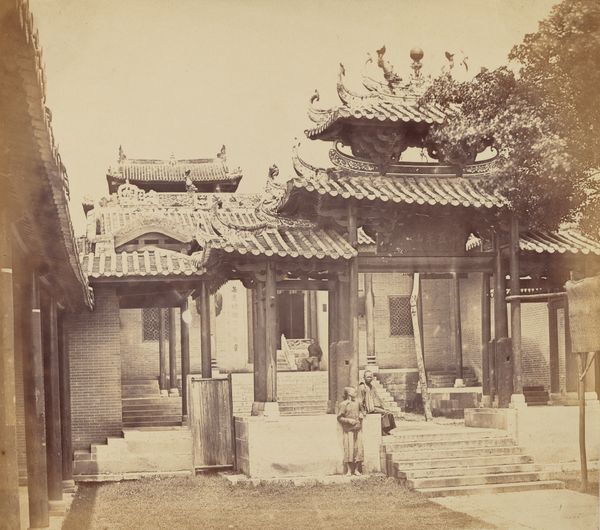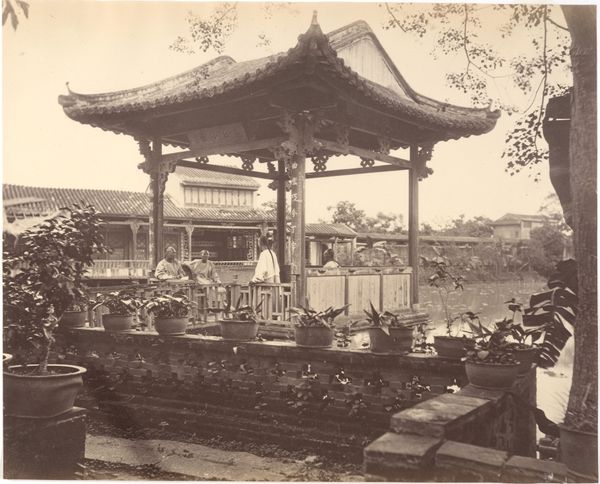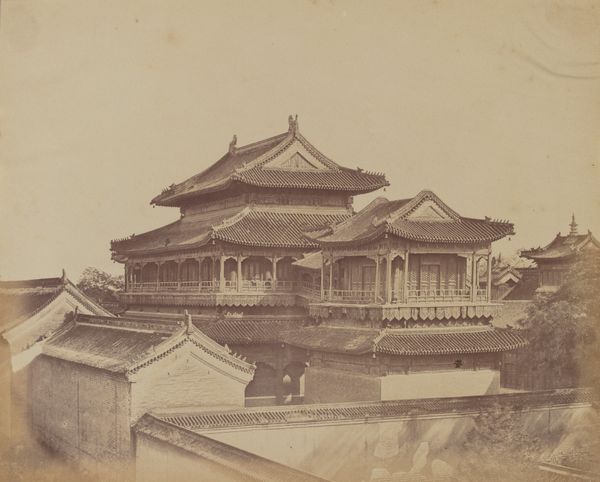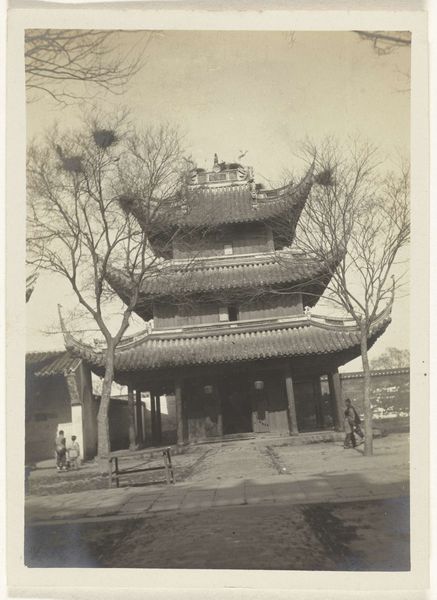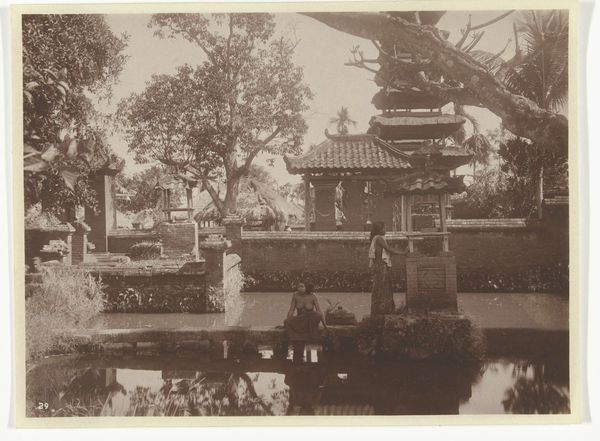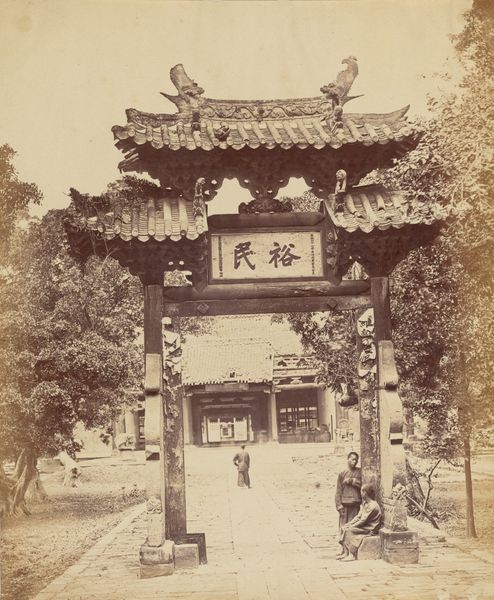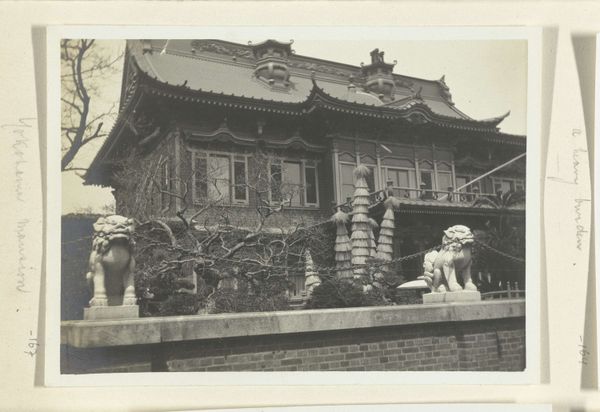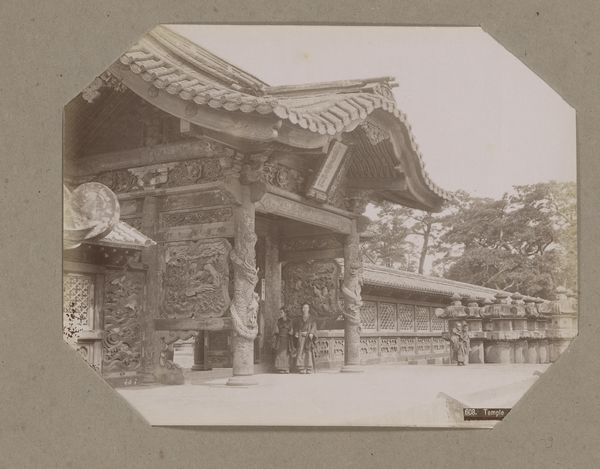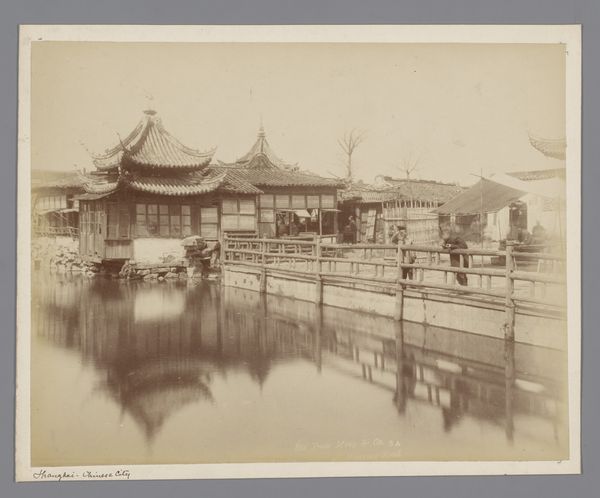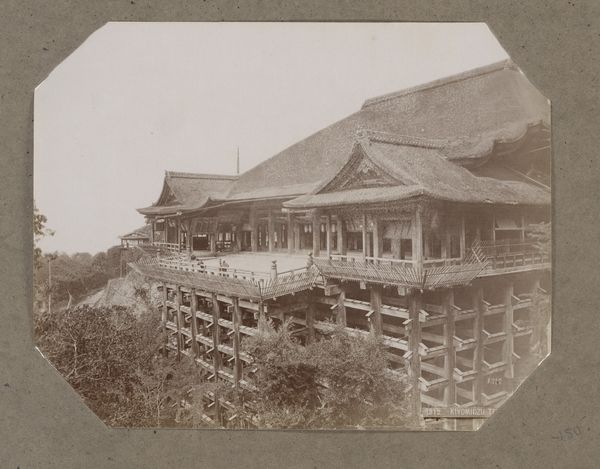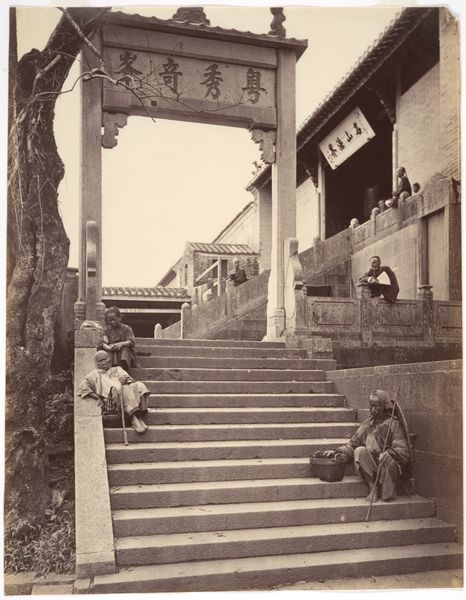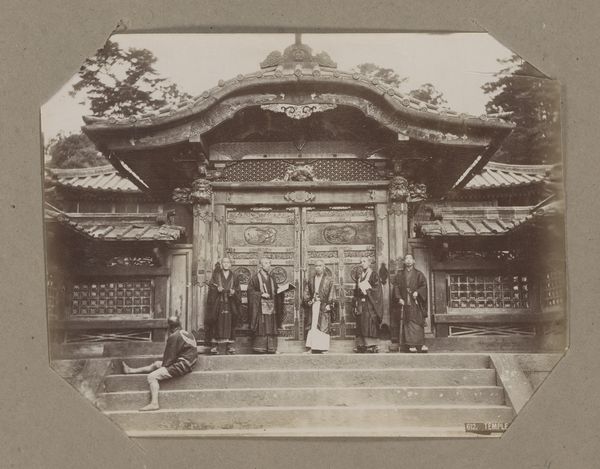
print, photography, architecture
#
portrait
# print
#
asian-art
#
landscape
#
outdoor photograph
#
house
#
outdoor photography
#
photography
#
historical photography
#
arch
#
men
#
architecture
Dimensions: Image: 8 7/16 × 10 9/16 in. (21.5 × 26.9 cm)
Copyright: Public Domain
Curator: This albumen silver print is titled "Mandarin Dwelling, Canton," taken in 1869 by John Thomson. The scene depicts a traditional Chinese building with figures seated on its steps. Editor: The immediate impression is one of stillness and careful composition. I'm struck by the repetitive forms of the roof tiles and the ordered arrangement of what seem to be pots laid out in the foreground. It feels meticulously crafted, down to the smallest detail. Curator: Thomson's work is crucial for understanding 19th-century perceptions of China. His photographs circulated widely in Europe, shaping Western views of Chinese culture and society during a period of intense imperial engagement. He sought to document a range of social classes and settings. Editor: And you can see the signs of that engagement reflected in the construction itself. The craftsmanship evident in the woodwork and roof feels like a convergence of different labor practices—the traditional building techniques, adapted for what purpose, exactly? Who commissioned this, and with what materials? Curator: This building could represent wealth and status but also the negotiation between tradition and modernization during that era. Thomson captured a moment in time, laden with political and cultural tensions. Editor: Exactly. The photographic process itself adds layers to that tension, doesn’t it? The labor of creating a single print, the specific chemicals used to coax this image from light—it all speaks to a relationship between the photographer and the subject, and the materials involved in producing and receiving this image back in Europe. Curator: Indeed. Consider also how the figures are presented; they appear staged, their role to offer scale and perspective within a broader narrative that the photograph is trying to convey about Chinese life and architecture to a Western audience. Editor: Right, almost like props within the landscape, contributing to this composed, somewhat artificial representation of ‘dwelling’. I’m left pondering the story held within the clay itself – where did that come from, what did it contain? Curator: Looking at this image helps us to investigate the complex ways in which cultures perceive one another and also how they project their values, especially across vast cultural distances. Editor: Agreed. Thinking about the materials and their circulation reveals hidden stories about labor, trade, and the very act of representation itself. It encourages us to ask what gets lost—or, perhaps, transformed—in translation.
Comments
No comments
Be the first to comment and join the conversation on the ultimate creative platform.
